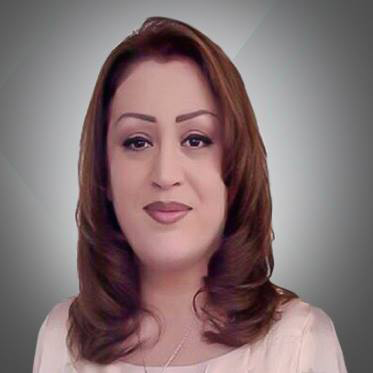The Lady with the Knife

In the Kurdistan Region’s larger cities, young girls often attend school, play with their friends, or spend time learning how to use new apps on their smartphones, just to name a few activities youth are engaged in today. Meanwhile, in the rural and more tribal areas of the region, young girls are fighting to hide from the lady who visits each house to perform the female equivalent of a circumcision—the lady with the knife.
Female genital mutilation (FGM) is an ancient tradition forced upon girls between the ages of 0-12, in an attempt to control their “sexual desires” in their later years. This baseless tradition has been passed down through many generations of women, stemming from the patriarchal desire to control a female. FGM is a practice that leaves a profound and lasting effect on a women’s life.
The birth of a daughter is often celebrated, even seen as a good omen in some countries. But in other places around the world, it is viewed as a burden, a virgin vessel that carries the great responsibility of carrying the family honor. Females in the family are often overprotected to keep this perceived “honor” intact to preserve the reputation of the family. Limited in her activities, especially in any interaction with the opposite sex, in order to keep her “pure.” Within these societies, altering the natural anatomy via genital mutilation was thought to diminish sexual desires within the female, thus, less chance of bringing shame or dishonor upon themselves.
Young girls have no knowledge of this practice as adults in the family usually decide their fate. Despite being banned by the Kurdistan Regional Government (KRG) and made illegal, FGM is still practiced today. The “lady with the knife” has become better at performing secretly in homes of families who generously compensate her for her service. Typically, the process begins by using a small, unsterilized butcher’s knife to dig out the young girl’s clitoris. The clitoris is erroneously believed to be the culprit that urges the female to seek sexual pleasure, an act of great shame.
The only anatomical part of the body solely purposed for sexual pleasure removed by one quick slice, if she is lucky. These young girls are expected to endure great pain without the relief of anesthesia, often held down by women and muzzled with cloth to muffle her screams from the outside world.
You wonder, how is her treatment unlike that of a sheep sent to a slaughterhouse?
If all goes well, her wounds are expected to heal in two weeks. But more often than not, these girls experience excessive bleeding and infections, and in some cases, even death.
The psychological healing, however, lasts a lifetime.
I have heard countless stories from my grandmother, aunts, cousins, and even my mother, of the devastating effects imprinted on the minds of these women, for whom the joys of womanhood have been forever silenced, not ever knowing what it feels to climax the way they normally would before their genitals were mutilated. There are women who, after enduring botched FGM procedures, live a life in constant embarrassment as they cover the smell of urine from their bodies because “the woman with a knife cut too deeply.” Women who are robbed from the pleasures that come with sharing that intimate moment with their partner, a partner who may not understand the difficulties in their physical relationship.
The list goes on and on.
We can all become the voice of reason, to teach those who continue to believe and practice this tradition about the devastating and often fatal effects of these life-altering decisions. Reporting the “lady with the knife” and the co-conspirators involved is a big step, as victims are often under control by their families and may not have the means to report this abuse. And should they come forward, they risk being accused of shaming themselves and their family, many becoming honor-victims as a result.
Do not stay silent. Use your voice to put an end to this criminal act because they cannot.
It is 2019. We can and should step up to save these girls, and their bodies, from a lifetime of injustice.
Barzinjee was born in Erbil to parents who were revolutionaries against Saddam Hussain’s Ba’ath Regime. In 1974, her family was exiled and lived in Kerej, Iran, until they migrated to the United States in 1977. She was raised in South Dakota but later moved to Virginia where she studied Fine Arts and Art History. After the no-fly zone was established in Iraq in 1992, Barzinjee decided to move back and reside in Erbil in 1999 and immersed her time in humanitarian aid efforts through the UN, KRG-Council of Ministers & various NGOs (local & international) where her professional, language and cultural skills could benefit.
The views expressed in this article are those of the author and do not necessarily reflect the position of Kurdistan 24.
Editing by Karzan Sulaivany
